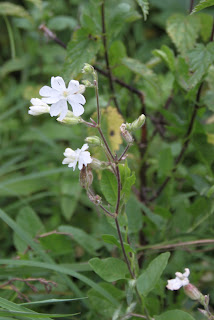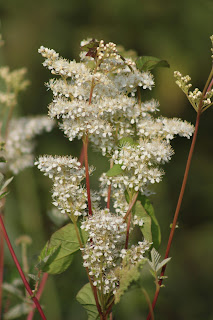A pipe was relaid alongside Kings Barn Lane recently causing a strip of disturbed ground. All along the strip has sprouted this plant - black nightshade, solanum nigrum.

The plant is a bit of a mystery. The white flowers should be followed by black berries - I'll look out for them.
Some books and websites warn that the berries and the whole plant are deadly poisonous.
Other references, mainly Asian, say that the berries make excellent eating and the greens are a tasty meal too. There are several recipes to be found on the web for using it.
A good account of the controversy is given at Forager's Harvest. Remember though, if you are an adventurous eater, not to rely on my identifications of any plant! I do not claim to be an expert.

















